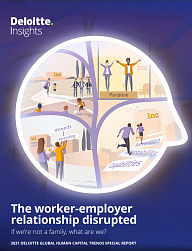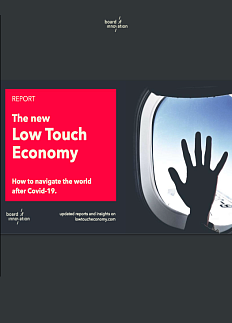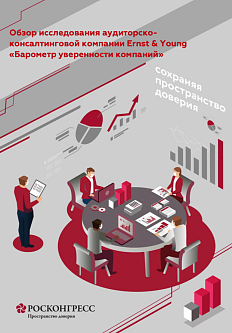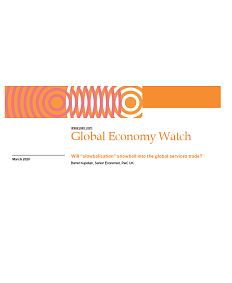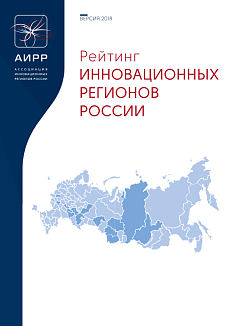The research, prepared by Deloitte, examines possible scenarios for the development of a worker-employer relationship in accordance with the challenges posed by the fallout of the pandemic and trends in global trade.
The Roscongress Foundation presents the salient points of the publication accompanied by fragments of broadcasts of relevant panel discussions from the business programme of international events held by the Roscongress Foundation.
The pandemic has exacerbated and tested the worker-employer relationship.
Employers were called upon to maintain health, wages and lives standard of workers to an unprecedented degree during the pandemic, and their success — or failure — in this endeavor was closely monitored. In the process, many questions have arisen about whether organizations are doing enough to support and protect their workers. People were quick to point to the defects of organizations in protecting certain segments of the workforce that were disproportionately affected by the pandemic crisis and economic downturn. For example, women whose employment was found to be 19% more at risk than men’s.
Organizations have also faced backlash against their role in promoting harsher working conditions amid the pressures of the pandemic. 89% of workers in a global Harvard Business Review survey conducted in February 2021 said their working lives were deteriorating, 85% said their well-being had declined, and 56% said their job demands had increased.
It’s no surprise that workers are rethinking their principles, from who they want to work for — 40% of the global workforce are considering leaving their employer this year — to the role they expect employers will play in supporting their goals and values. Likewise, organizations reflect on their role in society and their relationship with workers. Although a good worker-employer relationship may be a priority for both employees and managers, the best scenarios for their development may not be the same for the two groups.
Based on two factors related to working with talents and government agencies, four scenarios for the development of the worker-employer relationship can be distinguished.
Understanding how the worker-employer relationship may develop begins with determining which factors will have the greatest impact on its development. The authors of this study used focus groups to get managers’ views on what these factors might be, discussing a variety of possibilities, from economic growth and the importance of technology to climate and social issues. But the two factors that, according to the research, will have the greatest impact on the future of the worker-employer relationship are talent management and the influence of government agencies. The most obvious impact of talent management is the different actions that organizations or workers can take, depending on how easy or difficult it is to get a job or hire a skilled worker. As for government regulation, it came out on top as the most influential external factor that determines the ability of an organization and its staff to develop. The type, consistency, pace and effectiveness of government action can affect the worker-employer relationship.
In the review, the authors use these two factors to explore four potential scenarios that illustrate how the labor market and worker-employer relationship might evolve:
- Work as fashion: In this scenario, employers are in constant flux, chasing workers sentiment, competitor actions, and market dynamics. The worker-employer relationship is of a reactive nature: Employers feel compelled at the moment to respond to the expressed preferences of workers and the actions of competitors, without linking these actions with a sustainable work strategy.
- Talent war: In this scenario, workers compete for limited jobs due to a surplus of talent. The worker-employer relationship is impersonal: Employers view workers as easily replaceable, and the latter are more concerned with competition with each other for jobs than the quality of their relationship with the employer.
- Work is work: In this scenario, workers and employers view business responsibility and personal and social fulfillment as largely separate areas. The worker-employer relationship is professional: Each is dependent on the other to meet work-related needs, but both expect workers to find meaning and purpose largely outside of work.
- Purpose unleashed: In this scenario, the goal is the dominant force that determines the worker-employer relationship. The relationship between them is community-based: both workers and employers see a common goal as the foundation of their relationship, viewing it as the most important aspect that binds them together.
Video: https://roscongress.org/sessions/spief-2019-lider-xxi-veka/search/#00:32:32.768
To achieve efficiency in an uncertain world, companies need to implement three attributes in the processes of interaction between a worker and an employer: purpose, potential, prospects.
The study notes that it is necessary to introduce three important attributes into the human aspect of work: purpose, potential, prospects. These attributes can manifest themselves in various ways in different development scenarios proposed in the work. But it stands to mention that all these manifestations have much in common. Leadership, affiliation, filling work with meaning and goal, empowering, redesigning work architecture, harnessing human potential — all of these and more play an important role in building sustainable, differentiated worker-employer relationship in any scenario. In today’s unpredictable world, it is the ability to set and apply purpose, potential, and perspective in any scenario that enables an organization to thrive. At the time of making choice, it is vital to set a bold direction for all organizational strategies — business, work, and social — and move confidently in that direction.
For more information, see the special sections of the Roscongress Foundation Information and Analytical System: StayHomeEconomy, dedicated to possible ways to stabilize the economy in a pandemic; as well as Labor market and Level and Quality of Life, dedicated to the worker-employer relationship development.


